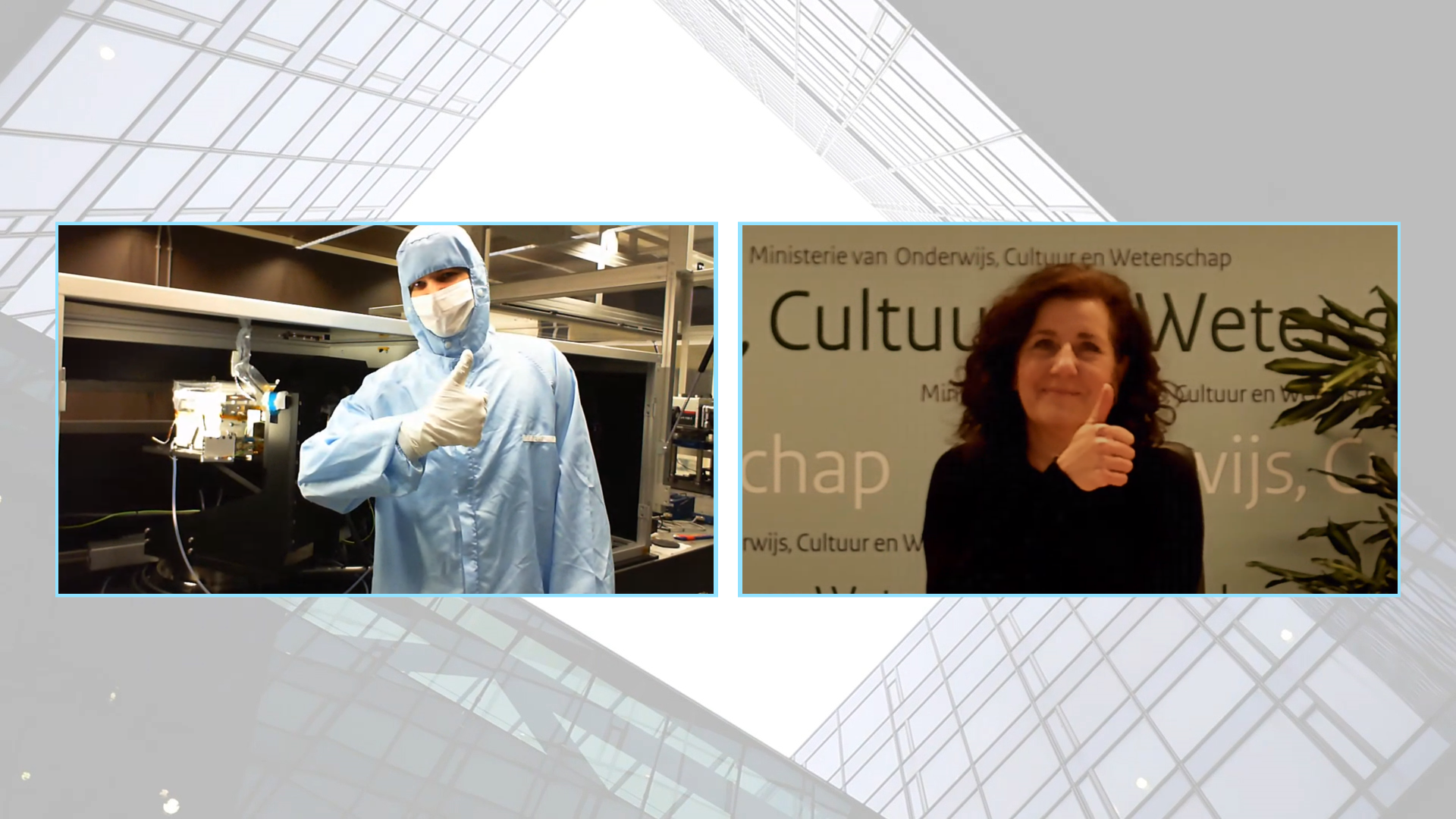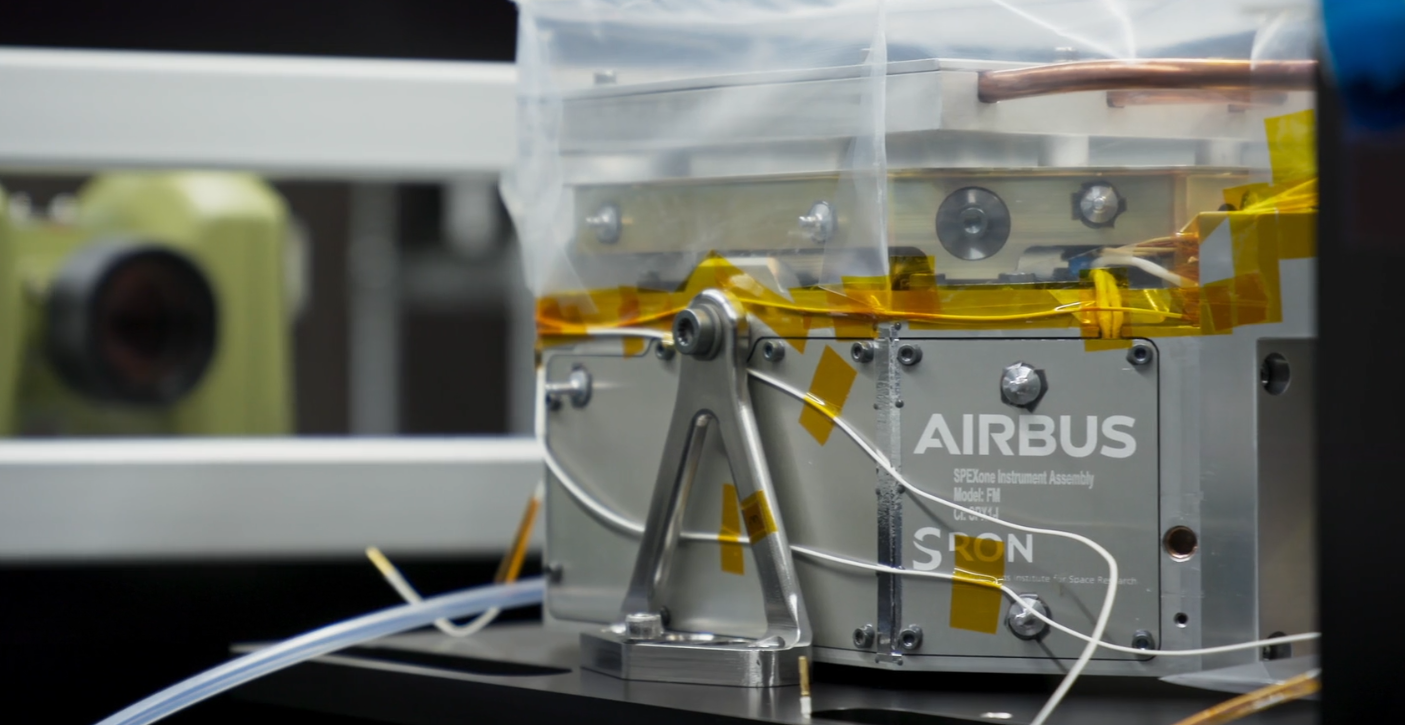(English follow Dutch)
Op 22 februari vond in aanwezigheid van minister Van Engelshoven (OCW) en wetenschappers van NASA een laatste (virtuele) inspectie plaats van het Nederlandse ruimte-instrument SPEXone, dat snel daarna op transport gaat naar het Goddard Space Flight Center van NASA. SPEXone vliegt vanaf 2023 mee op de NASA-missie PACE, die wetenschappers gaat helpen om klimaatvraagstukken op te lossen. SPEXone is specifiek ontwikkeld om de invloed van aerosolen op het klimaat te ontrafelen.

Aerosolen zijn kleine deeltjes als roet, as en woestijnstof in onze atmosfeer. Ze hebben grote invloed op klimaatverandering en luchtvervuiling, maar hun precieze rol is onvoldoende bekend. Hierdoor liggen de scenario’s voor klimaatopwarming voor het jaar 2100 wel drie graden Celsius uit elkaar. De meeste aerosolen weerkaatsen licht, waardoor ze een afkoelend effect op de aarde hebben. Maar ze kunnen door absorptie ook een opwarmend effect hebben. SPEXone gaat de eigenschappen van aerosolen—zoals afmeting, samenstelling, vorm en hun absorberend en weerkaatsend vermogen—bepalen.
Over SPEXone
SPEXone is een compact, optisch satellietinstrument dat aerosolen zal karakteriseren vanuit een lage baan om de aarde. Het is onderdeel van NASA’s PACE-satelliet (lancering 2023). SPEXone wordt ontwikkeld door een Nederlands consortium bestaande uit ruimteonderzoeksinstituut SRON en Airbus Defence and Space Netherlands, daarbij ondersteund door opto-mechanische experts van TNO. SRON en Airbus DS NL zijn verantwoordelijk voor het ontwerp, de samenbouw en het testen van het instrument. De wetenschappelijke leiding ligt in handen van SRON. Het SPEX-meetprincipe is ontwikkeld door Frans Snik en Christoph Keller aan de Universiteit Leiden. SPEXone is een publiek-privaat initiatief dat mogelijk gemaakt is door het NSO met door OCW beschikbaar gestelde middelen en door SRON-NWO met ondersteuning van Airbus DS NL.

Final inspection of Dutch space instrument SPEXone before transport to NASA
On February 22th a final inspection took place of the Dutch space instrument SPEXone, in the presence of Dutch science minister Van Engelshoven (OCW) and NASA. Soon after the event the instrument will be transported to NASA. From 2023 onwards SPEXone will fly on NASA’s PACE mission, which will help researchers resolve climate issues. SPEXone is specifically developed to unravel the impact of areosols on the climate.

Aerosols are small dust particles in the air, such as soot, ash and desert dust. They have a major influence on air pollution and climate change, but their precise role is insufficiently known. That is why scenarios for global warming up to the year 2100 vary approximately 3 degrees Celsius. Most aerosols reflect light and have a cooling effect on the Earth, but they can also have a warming effect due to absorption. SPEXone will map out the properties of aerosols, such as size, shape, composition and absorbing/reflecting power.
About SPEXone
SPEXone is being developed by a Dutch consortium consisting of SRON Netherlands Institute for Space Research and Airbus Defence and Space Netherlands, supported by opto-mechanical expertise from TNO. SRON and Airbus DS NL are responsible for the design, manufacture and test of the instrument. The scientific lead is in the hands of SRON. The SPEX measurement concept was developed and prototyped by Frans Snik and Christoph Keller at Leiden University. SPEXone is a public-private initiative, made possible by NSO, with resources made available by the Dutch ministry of science and by SRON-NWO, with support from Airbus DS NL.



